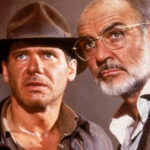

“The Texas Chain Saw Massacre,” directed by Tobe Hooper, stands as an undeniable landmark in the realm of horror cinema. Since its debut in 1974, this disturbing film has intrigued and terrified audiences worldwide. Filled with dark secrets and fascinating trivia, this genre masterpiece continues to garner interest and admiration decades after its creation. In this exploration of the inner workings of cinematic terror, we delve deep into the behind-the-scenes curiosities of “The Texas Chain Saw Massacre,” uncovering unknown and captivating details about its production and enduring legacy.
1 – BASED ON A REAL KILLER
Surprisingly, The Texas Chain Saw Massacre was based on a real-life killer, Ed Gein, who had a troubled childhood filled with family dramas, much like the character Leatherface. With an extremely Catholic mother and an absent father, Ed came to see the world through the lens of suffering, which directly impacted his perceptions and relationships with others. It was from the 1940s onwards, following the sequential deaths of his parents and brother, that he developed an interest in death and the occult, treating life as a playground for bizarre experiments.
Utterly alone in the United States, Ed Gein went on to commit heinous crimes and was classified as one of the foremost grave robbers of his time, retrieving pieces of decomposed bodies to keep as souvenirs and committing murders in suspicious locations, though legally only being linked to two deaths. During the investigations, what shocked authorities the most were the “mementos” hidden in the serial killer’s house, which included hundreds of bones, skulls, skin masks, noses, hearts, and much more.
After being captured and deemed mentally unfit, Ed Gein was taken to a psychiatric hospital, where he spent the rest of his life institutionalized. On July 26, 1984, he died of a heart attack due to cancer.
2 – BUDGET AND BOX OFFICE
The film became a major box office success, grossing around $153 million, which is impressive considering its low budget of just $300,000.
3 – GRUELING SHOOTING SCHEDULE
The filming of the movie was intense and grueling due to its extremely limited budget. As a result, the director had to work every day of the week, extending the sessions for long periods to save on production costs and equipment rentals.
4 – UNWASHED COSTUMES
Due to the film’s extremely limited budget, Gunnar Hansen was forced to wear the same Leatherface costume for an entire month, keeping the mask on for 12 to 16 hours each day. Additionally, the costumes were never washed as the production team feared damaging them.
5 – NEARLY HAD A REAL ACCIDENT
During the scene where Leatherface attacks Kirk, there was nearly a fatal accident as the chainsaw came within inches of his face during filming. Additionally, there’s a scene where Leatherface is running through the forest with the chainsaw running, and he ends up falling, causing the blade to nearly hit his head.
6 – HEAVY CENSORSHIP
The film faced censorship and controversy in many countries due to its graphic portrayal of violence and horror. Several versions were edited to meet the requirements of different audiences.
7 – THE CHOICE OF TITLE
The title of the film, “The Texas Chain Saw Massacre,” emerged from an urban legend that director Tobe Hooper heard as a child. This dark story served as inspiration for the film’s plot.
8 – THE BEGINNING OF SLASHER TERROR
The Texas Chain Saw Massacre is essentially the origin of slasher horror, with several elements present in the film being used by numerous subsequent genre films, such as the use of tools to murder victims, a masked killer, tall, strong, and personality-less.
9 – REAL LOCATIONS
A significant portion of the film was shot in real locations, including an abandoned farmhouse in Texas. This added an element of authenticity and claustrophobia to the scenes, enhancing the film’s visual impact.
10 – TEXAS INFLUENCE
Texan culture played a significant role in shaping the atmosphere and style of the film. Elements such as the arid desert landscape, rural culture, and scorching Texas heat contributed to the sense of isolation and despair depicted in the movie.
11 – THE CLASSIC SOUNDTRACK
The film’s soundtrack, composed by Tobe Hooper and Wayne Bell, mainly consisted of industrial sounds and disturbing audio effects. This helped to heighten the tension and horror atmosphere throughout the film.
12 – SEQUELS AND REMAKES
“The Texas Chain Saw Massacre” spawned several sequels and remakes over the years, including a direct sequel, prequels, and reboots. While not all have achieved the same critical success as the original, they demonstrate the enduring influence of the franchise.
13 – HARSH CRITICISM
The film initially received mixed reviews, with some critics condemning its graphic violence and disturbing themes. However, over the years, the film has been reevaluated and recognized as a masterpiece of the horror genre.
14 – EDWIN NEAL
Edwin Neal, the actor behind the Hitchhiker, Leatherface’s brother, researched the peculiar behavior of his nephew who suffered from schizophrenia to bring to life the personality of his character.
15 – THE FILM WAS BANNED IN SEVERAL COUNTRIES AT THE TIME
Upon its theatrical release, “The Texas Chain Saw Massacre” received mixed reviews, deemed excessively violent for its time. Consequently, it was banned in several countries, and some cinemas chose not to screen it. However, over the years, the film gradually gained acceptance and was elevated to cult classic status. It even began appearing on lists of the greatest films of all time as audiences recognized its importance and influence in the horror cinema landscape.
Exploring the trivia behind “The Texas Chain Saw Massacre,” we delve into a dark and fascinating universe that continues to intrigue and terrify audiences worldwide. From its inspiration in real events to its enduring legacy in the horror genre, this iconic 1974 film has left an indelible mark on popular culture. The stories behind the filming, the challenges faced by the crew, and the cultural and cinematic impact the film has had over the years are testaments to its significance and influence. As we bid farewell to this dive into the depths of terror, it is impossible not to recognize the lasting impact of “The Texas Chain Saw Massacre” and its privileged position as one of the cornerstones of horror cinema, leaving us unsettled and fascinated, even after so many decades.








